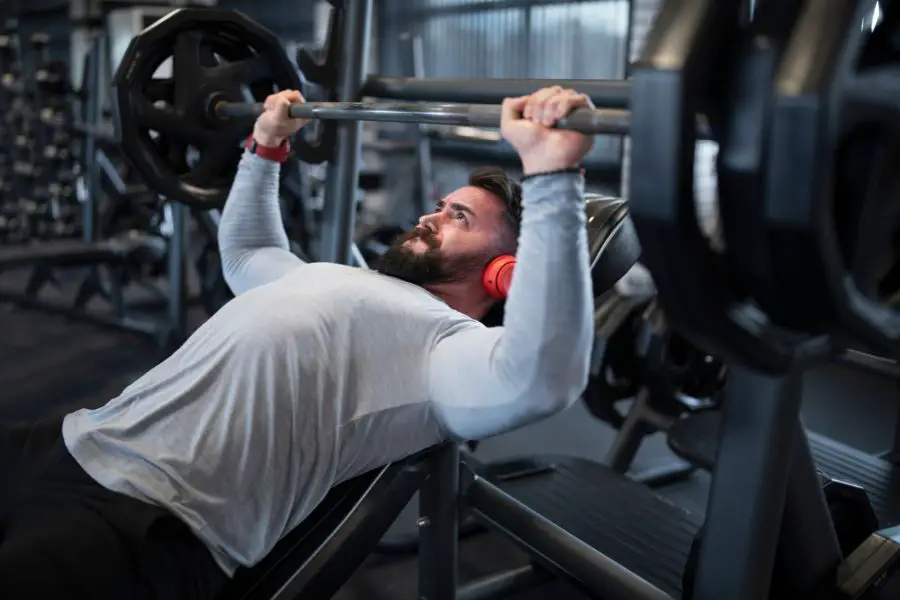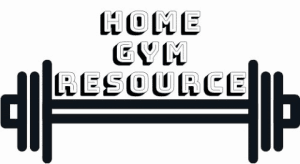You like the barbell bench press but don’t have a barbell available, just a functional trainer. Is it possible to do the bench press with a cable machine?
While a functional trainer can’t be used to do the traditional bench press it’s a great piece of equipment to train the chest and many other body parts. Chest presses, flies, and cable crossovers and all their variations are very effective in building pec size without the need for a barbell.
Let’s get into the details of why the traditional bench press can’t be done on a cable trainer, how you can train your chest, and why it might be even more effective on a functional trainer.
Contents
Can You Bench Press On a Cable Machine?

You can’t really do a barbell bench press on a cable machine. Even though a functional trainer offers various chest exercises, the traditional barbell bench press isn’t one of them.
Don’t worry, though; you can still work your chest muscles effectively using a functional trainer. Just remember, a functional trainer doesn’t have a barbell, and there’s no perfect substitute for it. While there’s a bar attachment available, it’s not ideal for bench pressing, as I’ll explain in a moment.
Double Sided Barbell Attachment
Functional trainers have a cable attachment that resembles a barbell. You can connect both ends of the bar to the two cables, creating a bar with resistance. But can this setup be used for bench pressing when you add a bench?
Here’s the deal: Set the pulleys at the lowest point, place the bench in the middle, and attach the bar. Now, it might look somewhat similar to a barbell bench press, but there’s a crucial difference. In a regular bench press, the bar rests above you, making it easy to grab, lift, and press.
However, with the bar attachment on the cables, it’s always being pulled downward, making it impossible to position for an easy lift. When the weight is light, you might manage to lift the attachment, slide underneath, and press it. But as the weight gets heavier, it becomes downright unsafe.
I’ve tried this myself and nearly had a nasty accident involving the attachment nearly hitting my head. My advice: Please avoid trying this. These bar attachments are designed for pulling exercises, not pushing.
Functional Trainer & Smith Machine Combo
If you haven’t purchased a functional trainer and want the flexibility to use both a cable machine and perform a classic barbell bench press, consider looking for a functional trainer that comes with a Smith machine.
While a Smith machine isn’t exactly the same as a traditional bench press, it’s a lot closer in feel compared to a cable machine. When you use a Smith machine, the barbell gives you a similar experience to a real one, although it doesn’t offer the same range of movement. There are benefits and drawbacks to this, making it a valuable addition to your workout routine that includes cable exercises. Be aware, though, that these machines tend to be pricier and take up more space.
How To Train Your Chest On a Functional Trainer
In the end, if you are interested in doing the bench press, you likely want to train your chest. So while the functional trainer isn’t great for the traditional bench press, there are plenty of other exercise options that train your pecs. The bench press also targets your triceps but that’s not the main target muscle when bench pressing.
Here is a list of great cable exercises that will grow and strengthen your chest.
And that’s just a selection of the best options. There are quite a few more exercises and variations to train your chest on a cable machine.
The Benefits of Training Pecs On a Functional Trainer
Although a traditional barbell bench press isn’t doable with a functional trainer, there are excellent alternatives to achieve similar results, as shown above. Don’t feel too disappointed about missing out on the bench press because the exercises listed above come with some unique advantages over the traditional one.
Drawbacks Of Using a Cable Machine To Train Chest
There are also a few drawbacks to using a cable station to replace a chest press.
In the end, if you own a cable trainer and aim to work on your chest muscles, there are numerous effective ways to achieve your goals. Unless performing a heavy bench press is a top priority for you, there’s no need for an additional bench press setup. A cable trainer, when used with appropriate weights, sets, and a well-planned workout routine, can help you attain the muscle gains you desire.
Best Benches For a Functional Trainer
Adding a bench to your functional trainer will help train your chest. The bench will stabilize the body which means you can isolate the chest more and put more focus into moving that muscle only. A bench also helps you to move more weight and so get better muscle and strength growth.
What kind of bench is best with a functional trainer? Most benches will work but if you want to get the most exercise options and really tailor your workout to your goals there are a few things you want to look out for in a bench;
The best bench I’ve found that combines all the characteristics above is the Fitness Reality X-Class, check it out.



